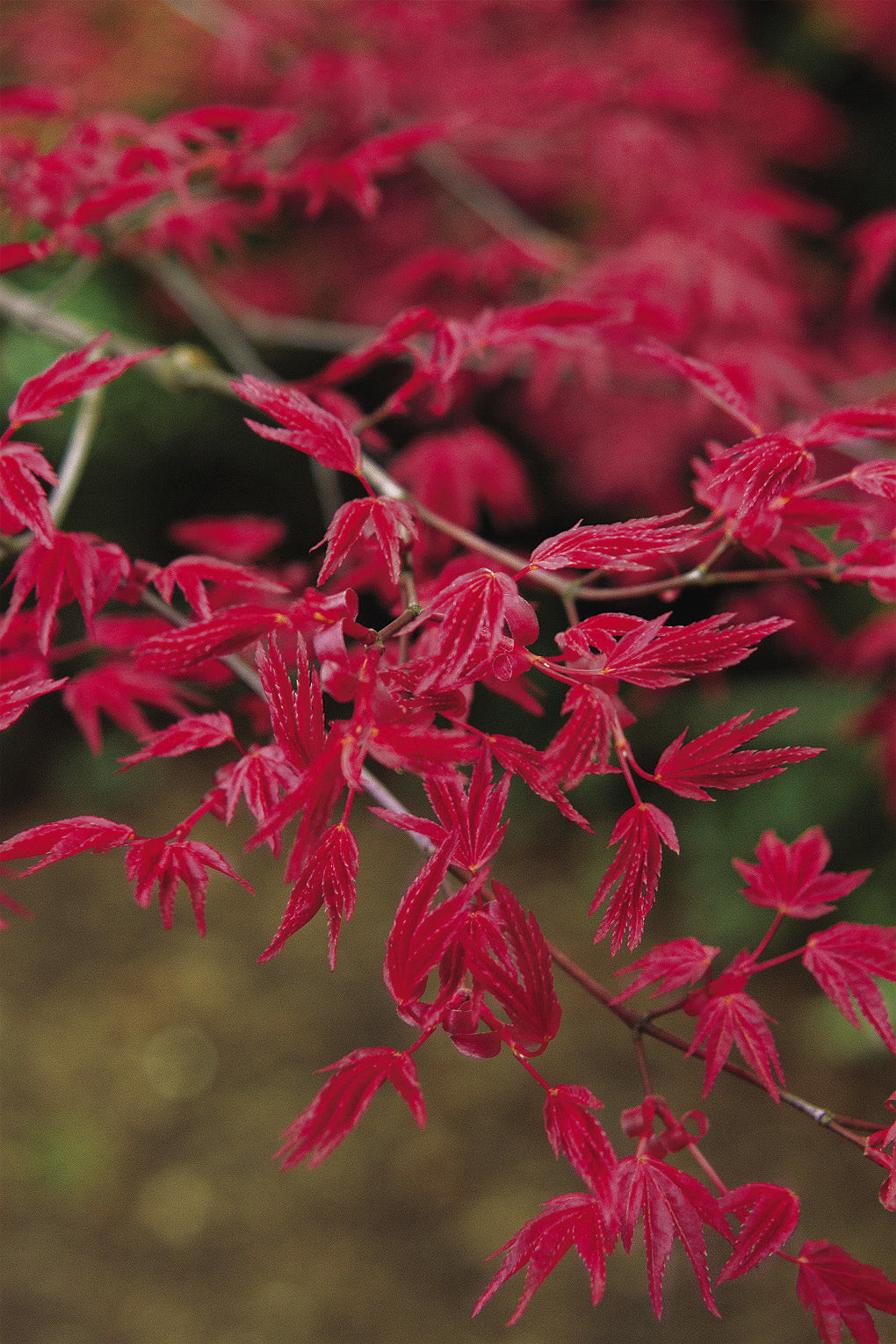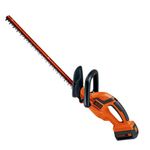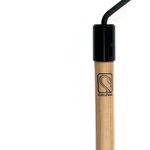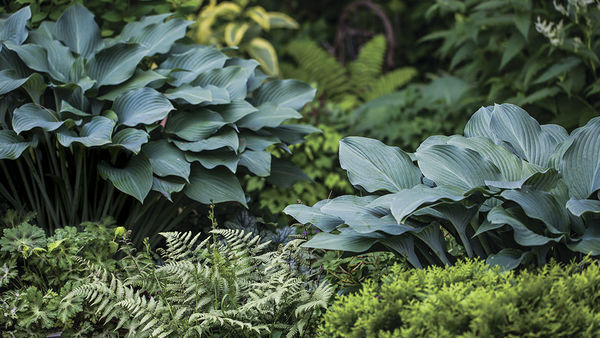
There aren’t many gardeners—beginners or experts—who don’t love a Japanese maple (cultivars of Acer palmatum, A. japonicum, and A. shirasawanum, USDA Hardiness Zones 5–8). They’re some of the most popular trees in our landscapes, offering graceful forms, vivid foliage colors, and undeniable beauty. The average garden center, unfortunately, has only five or six varieties to choose from, and they’re usually the popular standards, like ‘Bloodgood’ (A. palmatum ‘Bloodgood’), and various burgundy threadleaf varieties, like ‘Crimson Queen’ (A. palmatum ‘Crimson Queen’). While these varieties are wonderful, they offer no hint of the kaleidoscope of colors, shapes, and textures to be had in the wider world of Japanese maples. We surveyed a number of Japanese-maple aficionados to ask for their absolute favorite variety in several categories. Their picks will excite and entice you, and send you on the hunt to find a variety beyond ‘Bloodgood’.
Most Exciting New Variety

‘Olsen’s Frosted Strawberry’
Name: A. palmatum ‘Olsen’s Frosted Strawberry’
Mature size: Up to 10 feet tall and wide
This exciting new variety is a hit with many of our experts, and it’s easy to see why. The foliage emerges strawberry red and pink in spring, and lightens to a variable show of pink, silvery white, and green with pink leaf stems. In fall, the leaves turn shades of orange and pink. Slow growing and slightly weeping, ‘Olsen’s Frosted Strawberry’ is sure to attract fawning attention in any garden. Give this variety afternoon shade for the best color show.
Our experts say:
“This is a multicolored showstopper that changes with the light and the season. Give it the right location and you’ll get silvers, reds, and greens all at once.”
– Henry Eastwood and Francie Schroeder are co-owners of Eastwoods Nurseries in Washington, Virginia, where they specialize in Japanese maples, conifers, and ginkgos.
Honorable mentions:
‘Amber Ghost’, ‘Lileeanne’s Jewel’, ‘Rainbow’
Best Spring Color

‘Shindeshojo’
Name: Acer palmatum ‘Shindeshojo’
Mature size: Up to 10 feet tall and 8 feet wide
The leaves of this stunning variety emerge bright pinkish crimson in spring, slowly fading to green, with flushes of pink thereafter on new growth. The form of ‘Shindeshojo’ is shrubby and dense, and its young stems are reddish brown to deep purple.
Our expert says:
“This amazing maple has the most brilliant red spring color. It wows in autumn, too, with pastel colors in shades of orange and red.”
– Robert Jamgochian has been collecting rare and exotic maples at Mendocino Maples Nursery in Mendocino, California, for more than 25 years.
Honorable mentions:
‘Katsura’, ‘Ariadne’, ‘Geisha Gone Wild’
Best Variegated Foliage

‘Ukigumo’
Name: A. palmatum ‘Ukigumo’
Mature size: Up to 6 feet tall and wide
‘Ukigumo’ stands out for its dense, striking variegation in shades of white, pale green, and pink. This is a small upright tree with attractive horizontal branching. Give it morning sun and afternoon shade for the best color show and to avoid burning its delicate leaves. Gardeners in warm climates might have a less-than-optimal variegation display.
Our expert says:
“This is an extraordinary small tree. The irregular variegation is most pronounced at the tips of the small lobes, where the nearly white ground color is minutely spotted and smeared with green and the lobe edges and tiny teeth often edged in hot pink. Sometimes, whole leaves are stained pink, and on occasion, leaves may be partially or entirely green. The Japanese name translates as ‘floating clouds,’ an entirely appropriate appellation for this lighter-than-air confection.”
– Douglas Justice is a member of the Maple Society and the curator of collections at the University of British Columbia Botanical Garden in Vancouver, British Columbia.
Honorable mentions:
‘Butterfly’, ‘Shirazz’, ‘Manyo no sato’
Best Dark Foliage

‘Trompenburg’
Name: A. palmatum ‘Trompenburg’Mature size: 18 to 20 feet tall and wide
The foliage of ‘Trompenburg’ emerges bright red in spring, matures to deep mahogany in summer, and turns crimson red in fall. It’s a somewhat large, fast-growing tree, and it is tolerant of bright sun and heat.
Our expert says:
“The edges of its leaves are attractively rolled under, giving the leaves an unusual and distinctive fingerlike quality. The habit of the plant is strongly upright with layered lateral branching. It’s fantastic in a large container.”
—Douglas Justice
Honorable mentions:
‘Moonfire’, ‘Emperor I’, ‘Burgundy Jewel’
Best Weeping Form
‘Inaba-shidare’

Name: A. palmatum ‘Inaba-shidare’
Mature size: Up to 10 feet tall and 12 feet wide
This classic weeping, laceleaf variety fulfills every gardener’s fantasy of a sculptural Japanese maple. The foliage of ‘Inaba-shidare’ emerges deep purple in spring, lightens to burgundy in summer, and brightens to vivid red in fall. The tree’s cascading domelike shape looks especially beautiful near a pond or as the focal point of a bed.
Our expert says:
“You can enjoy this maple as a prominent focal-point planting in any garden, but its small size makes it ideal for patio planters and container gardens, as well. The growth habit, durability, and shape make it the quintessential weeping Japanese-maple cultivar for any location.”
– Matt Nichols is an executive board member of the North American branch of the Maple Society and a co-owner of mrmaple.com, a mail-order Japanese-maple seller in East Flat Rock, North Carolina.
Honorable mentions:
‘Red Dragon’, ‘Ryusen’, ‘Sekimori’
Most Unique Variety

‘Shishi-gashira’
Name: A. palmatum* ‘Shishi-gashira’
Mature size: Up to 15 feet tall and 12 feet wide
‘Shishi-gashira’ is a unique, slow-growing variety whose thick, textured leaves grow in layered tufts. Its unusual characteristics make it popular for bonsai and container gardens, where it can be enjoyed close up. It’s a slow grower and can look awkward when young, and the leaves grow more sparsely than when mature. So some patience is required, which will be amply rewarded.
Our expert says:
“This easy-to-grow and sun-tolerant variety has an unusual architectural shape with upright branches and small crinkled leaves. It starts spring a few days earlier than most maples, with new leaves in an electric shade of green like no other you’ve seen. The color gradually deepens to dark green and then turns brilliant orange-red to red and yellow in fall.”
– Keith Johansson is a lifetime member and the current president of the North American branch of the Maple Society and the founder and owner of Metro Maples in Fort Worth, Texas.
Honorable mentions:
‘Fairy Hair’, ‘Baby Lace’, ‘Korean Gem’
Best Fall Color

‘Orangeola’
Name: A. palmatum ‘Orangeola’
Mature size: 8 to 10 feet tall and up to 8 feet wide
Perhaps ‘Orangeola’ wins this category in part because its changeable, brilliant orange-red fall foliage stands out from the more familiar true bright reds of most Japanese maples in fall. But its gracefully cascading, lacy leaves are just as compelling. This variety does particularly well in hot, sunny climates. Expect orange-red spring color that fades to orange-tinted green in summer, with flushes of orange new growth.
Our expert says:
“This vigorous variety is amazing to watch grow as it seems to be a tiny bit different every day. Its dense, weeping habit makes it fun to prune and shape. The fall colors are sometimes orange, sometimes pinkish red, and many times a brilliant deep ruby red several shades darker than most other Japanese maples.”
—Keith Johansson
Honorable mentions:
‘Hogyoku’, ‘Ukon’ A. japonicum’, ‘Dancing Peacock’
Best Dwarf Form

‘Mikawa-yatsubusa’
Name: A. palmatum ‘Mikawa-yatsubusa’
Mature size: Up to 5 feet tall and wide
The North American branch of the Maple Society voted ‘Mikawa-yatsubusa’ “Maple of the Year” for 2015. It’s a small slow-growing variety that is popular for bonsai. Its densely layered foliage emerges yellow-green in spring, darkens to rich green in summer, and brightens to golden orange to red in fall.
Our expert says:
“What separates this cultivar from all of the other delightful dwarf Japanese maples is the attractive overlapping leaves that protect the plant against unexpected freezes. The finely toothed, pointed leaves appear to be much longer than other dwarf forms. I get a lot of ‘wows’ in my garden over this little jewel.”
– Vince Dooley, former head football coach and athletics director at the University of Georgia, is now an avid collector of Japanese maples in Athens, Georgia.
Honorable mentions:
‘Sharp’s Pygmy’, ‘Kiyohime’, ‘Kamagata’
Best Midsize Tree

‘Orange Dream’
Name: A. palmatum ‘Orange Dream’
Mature size: Up to 12 feet tall and 10 feet wide
This rare maple is slow growing and upright with an almost shrublike form and green bark. It boasts an ongoing show of delicate colors throughout the growing season but is most prized for its orange spring color. Give ‘Orange Dream’ afternoon shade for optimal performance.
Our expert says:
“Of the hundreds of varieties I grow each year, ‘Orange Dream’ is one of the most rewarding. The color pageant starts in early spring, when leaves emerge bright orange with darker leaf margins. The color changes from orange to orange-yellow and eventually to yellow-green in midsummer. Autumn brings a show of fiery orange-yellow. The medium vigor and bushy, upright habit make it outstanding for many landscape settings. ‘Orange Dream’ prefers morning sun and afternoon shade to live up to its best color potential.”
– Micah Norcom is the owner of Maplestone Ornamentals, a mail-order nursery in Alliance, Ohio, specializing in Japanese maples and other rare trees.
Honorable mentions:
‘Kinran’, ‘Katsura’, ‘Skeeter’s Broom’
Best Threadleaf Variety

‘Koto-no-ito’
Name: A. palmatum* ‘Koto-no-ito’
Mature size: Up to 12 feet tall and wide
This upright, spreading tree’s fine-textured foliage stands out. It emerges crimson in spring, quickly turning green for summer, until it heaps on even more interest with its multihued fall show. In winter, the green bark of ‘Koto-no-ito’ lends a bit of color to a dormant garden.
Our expert says:
“This variety is often described as ‘bamboolike.’ The lobes of its green leaves vary slightly in width and catch the light in different ways, adding to the beauty of the tree. Then in fall, an amazing transformation occurs: Suddenly, the foliage becomes a rich copper-gold tapestry overlaid with random shots of scarlet. It shimmers in the slanting autumn light. ‘Koto-no-ito’ was one of my first favorites—and even now that we’ve grown more than 250 different cultivars, I still love it!”
– Sara G. Monte is a co-owner of Wildwood Farm in Kenwood, California, where she specializes in dogwoods, conifers, semidwarf ginkgos, and Japanese maples.
Honorable mentions:
‘Tamukeyama’, ‘Seiryu’, ‘Beni-otake’
Best Full-Size Tree
‘Osakazuki’

Name: A. palmatum ‘Osakazuki’
Mature size: Up to 25 feet tall and wide
The foliage of this upright, rounded tree is a pleasant, unassuming rich green all season long, lending a steady presence to a garden. But it’s in fall that ‘Osakazuki’ truly shines, with fall color in a brilliant crimson red that outshines almost every other maple in its intensity.
Our expert says:
“Quickly growing to 18 feet tall (or more) in 10 years, this tree is consistently taller than any other maple in the nursery. Its strong upright form and clear, bright red fall color can be seen for miles.”
– Patricia Smyth is a Japanese-maple specialist and the second-generation owner of Essence of the Tree, a mail-order Japanese-maple nursery in Potter Valley, California.
Honorable mentions:
‘Ezo nishiki’, ‘Shishi-gashira’, ‘Beni-otake’
The Care and Feeding of Japanese Maples
Japanese maples, in general, are fairly easy to grow. Most are hardy in Zones 5 to 8 and prefer moist, well-drained, slightly acidic soil. But to ensure success, here are a few more factors to consider.
Choose your location wisely 
If possible, choose a location away from strong winds or blazing sun. Most varieties prefer either sun-dappled shade or morning sun and afternoon shade—especially in hot, sunny climates where Japanese maples are prone to scorched leaves. Varieties grown for their fall color should be situated in slightly brighter spots.
Fertilize sparingly
While they are not heavy feeders, Japanese maples do benefit from fertilizer twice yearly: once in spring before leaves emerge and then once more in midsummer. Wait until a year after planting to begin, and fertilize at half the strength recommended on the fertilizer’s label. Most all-purpose fertilizers will suffice.
Mulch generously
Mulch is highly recommended to insulate the roots of a Japanese maple and to conserve water. A 3- to 5-inch-deep layer of bark mulch or wood chips is best.
Prune carefully
Prune your Japanese maple every few years to remove deadwood and crossing branches and for minor shaping and maintenance. Prune only from late summer to early winter to avoid excessive sap loss.
Remove snow but not ice
Japanese maples—especially weeping varieties—are vulnerable to breakage from heavy snow loads, so shake or brush the trees off regularly throughout winter. Ice-covered branches, however, should not be touched because the branches are frozen and can easily crack.
Plant in fall
Planting in fall, six weeks before the first frost, gives maples a chance to settle in before winter, so they can start off established in spring. Water newly planted trees regularly.
Michelle Gervais is a senior editor.
Plant photos: Doreen Wynja, except: Micah Norcom; Elke Borkowski/gapphotos.com; millettephotomedia.com; Lynn Keddie/gapphotos.com; Richard Bloom/gapphotos.com; Dave Zubraski/gapphotos.com; Clive Nichols/gapphotos.com. Participant
Photos: courtesy of the participant, Branden Eastwood. Illustrations: Abigail Lupoff
Sources:
- Eastwoods Nurseries, Washington, Va.; 540-675-1234; japanesemaples.com
- Essence of the Tree, Potter Valley, Calif.; 888-489-1886; essenceofthetree.com
- Maplestone Ornamentals, 6774 Union Ave., Alliance, OH 44601; maplestoneornamentals.com
- Mendocino Maples Nursery, Mendocino, Calif.; 707-937-1189; mendocinomaples.com
- Metro Maples, Fort Worth, Tex.; 817-797-3419; metromaples.com
- Mrmaple.com, East Flat Rock, N.C.; 828-226-5684; mrmaple.com
- Wildwood Farm, Kenwood, Calif.; 888-833-4181; wildwoodmaples.com
Fine Gardening Recommended Products

Black & Decker 40-Volt Cordless Hedge Trimmer
Fine Gardening receives a commission for items purchased through links on this site, including Amazon Associates and other affiliate advertising programs.

CobraHead® Long Handle Weeder & Cultivator Garden Tool
Fine Gardening receives a commission for items purchased through links on this site, including Amazon Associates and other affiliate advertising programs.

ARS Telescoping Long Reach Pruner
Fine Gardening receives a commission for items purchased through links on this site, including Amazon Associates and other affiliate advertising programs.
























Comments
I think you accidentally have the Shishigashira photo and the Orangeola photos reversed. The Orangeola has the lacier pendulous leaf and the Shishigashira is the tighter curled leaf.
Log in or create an account to post a comment.
Sign up Log in